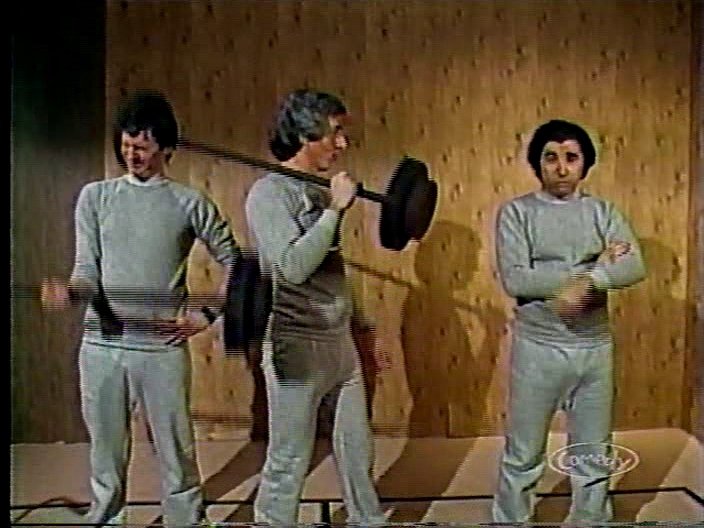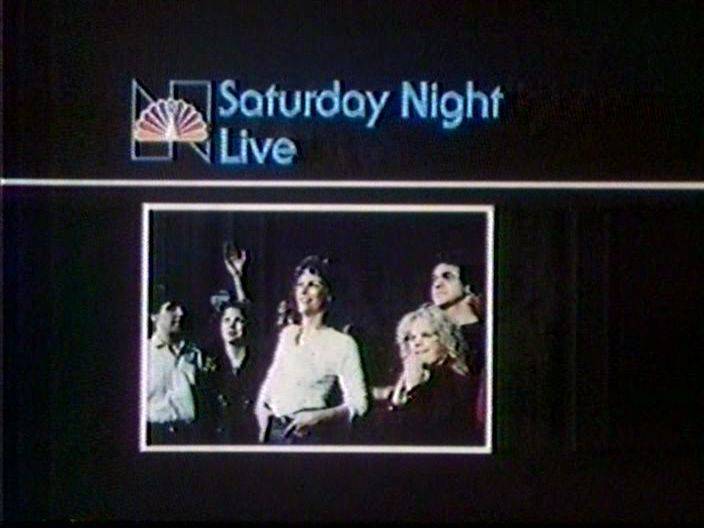
Existentialist Weightlifting
SNL Up Close: 1985-86
In four seasons, executive producer Dick Ebersol had brought Saturday Night Live back from the cancellation, had the hottest comedian in America in the cast, and oversaw its transition from a live incubator of new comic talent to an increasingly prerecorded showcase for established comedians. By 1985, though, Ebersol found himself tired of the show’s grueling schedule, and, after toying with staying with a mostly-prerecorded version of the show that wouldn’t premiere until the next January, decided to step away. Brandon Tartikoff, president of NBC Entertainment, had to consider his options, and fast.
1980-85 wrapup: Last words on the "lost years"
I started this review project back in the summer of 2010; at the time, SNL message board regular Stooge was posting reviews of the early 90s shows with screen captures of sketches and occasional tidbits about which scenes were altered in repeats with dress rehearsal footage. I figured I may as well do my own set of reviews for a more obscure part of the show’s history.
Classic SNL Review: February 16, 1985: Pamela Sue Martin / The Power Station (S10E14)
Sketches include “The Joe Franklin Show”, “That White Guy & His Wife”, “Night of 100 Stars”, “Plexiglass Stand-up”, “Called Shot”, “Do You Know What I Hate (V)”, “First Draft Theatre”, “Dynasty’s Greatest Fights”, “Tom, Dick, & Horny”, and “Shootout at the Zepplin Chorale”. The Power Station performs “Some Like It Hot” and “Get It On (Bang A Gong)”.
Classic SNL Review: October 20, 1984: Rev. Jesse Jackson / Andrae Crouch, Wintley Phipps (S10E03)
Sketches include "Advice", "Do You Know What I Hate?", "The Question Is Moot!", "Refrigerator Magnet Safety Advisory Board", "Just Kidding", "First Class", "Tippi Turtle", "Wrong Voice, Right Face", "Funny Black People", "Jeane", "Rich Hall's Election Report", "Fashion Report" and "Rainbow Coalition". Andrae Crouch performs "Right Now" and Wintley Phipps performs "Tell Me Again".
Classic SNL Review: January 14, 1984: Father Guido Sarducci (Don Novello) / Huey Lewis and the News (S09E09)
Sketches include "Tasteless Choice", "What's New", "Buckwheat's Ghost", "The Man Who Loved Swimmin'", "Michael's Message", and "Airport". "Countdown '84", a phone-in Democratic primary, appears throughout the show. Huey Lewis and the News perform "Heart and Soul" and "I Want A New Drug". Steven Wright also appears.
Classic SNL Review: November 13, 1982: Robert Blake / Kenny Loggins (S08E06)
Sketches include: "The Merv Griffin Show", "Little Rascals Reunion", "Space Shuttle", "PBS", "The Best Little House On The Prairie", "Tyrone Goes Reggae", "Blue Lagoon", "Masterful Theatre", "Viewer Mail", "DTV", and "No More Andy Kaufman". Kenny Loggins performs "Heart To Heart" and "I Gotta Try". Merv Griffin makes a special appearance.
SNL Up Close: 1982-83
Dick Ebersol brought Saturday Night Live back from the brink of cancellation.His first full season of SNL had its share of volatility, particularly with Michael O'Donoghue's mid-season firing, but the show stablized by the end of the season.For the next season, Ebersol and producer Bob Tischler retreated a bit from the calculated risks the show took in 1981-82: Don Pardo was back in the announcer's booth, the "live from New York" phrase opened some (but not all) of the shows this year, and hosts once again got monologue segments following the opening montage. Like with 1980-81, and 1981-82, I will be doing sketch-by-sketch reviews of the episodes this season.If anyone has information to contribute about the episodes, such as who wrote what, writer cameos, etc., I welcome it and will acknowledge my source in the sketch review.
SNL Up Close: 1981-82
The 1981-82 season, while not considered a great year for the show, is SNL's most unique season.






